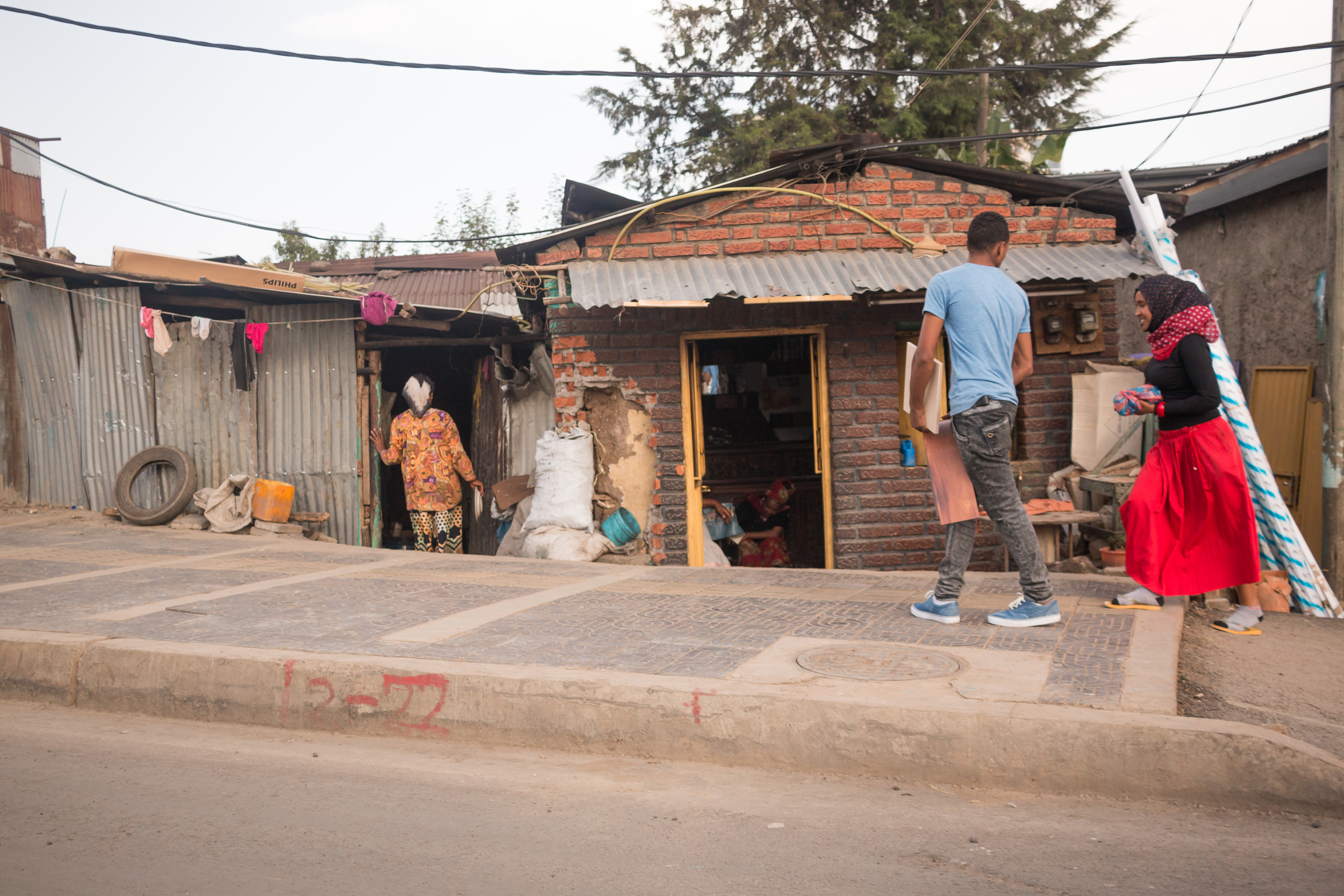“Sure, sure no problem” my heart picks up to a gallop after this confirmation. I don’t have the lens I really want but I’ll make due. I know we won’t have much time here and I also feel a bit invasive despite the approval. But this is exciting, quick photography I can try out. I notice a woman putting the finishing touches on the soles of some new black shoes. Another woman dipping her brush into glue. A man turning and bending leather on a sewing machine. The manager’s assistant is behind me, keeping me on my toes. Although he doesn’t say anything, his eyes are following me. The rows of random bits and pieces, the polisher & finishing line. The workers interactions have a practiced feel, will I capture it?
Jostein and Vincent have invited me to come on a factor visit with them. Central to their research are interviews with managers of private companies and government officials involved in industry, specifically textile and leather goods. I’m their ‘research assistant’ and today, really just an excited boy with a camera at a leather-goods factory. The manager is joyfully discussing and answers questions from the other two while I spend every second looking for a photo. We’re in and out in under ten minutes, but I’m happy with what results I’m able to get.
After leaving the factory we walk across the hard ground, scattered with cardboard boxes and packing material, and enter the corporate office building for a more formal interview continues. I pull out my journal and do my best to look like I’m doing something important, but mostly I'm writing random notes and circling words while nodding. I’ve never done qualitative research but I can see why the data is called ‘rich’. There is no way to control for how one person will answer a question compared to their colleague, and the breadth of results and the biases that may accompany them cannot be avoided. But it’s interesting and organic to see how a story is formed, the consistencies and mysteries that arise as Jostein and Vincent predict the mangers answers using knowledge from previous reports and readings. The man looks surprised, and elaborates on some of the difficulties and successes of the bolstering economy. Many companies face a problem of employee turnover; after training unskilled workers for up to months at a time, they are liable to leave for the slightest pay grade. This company and many others offer supringsling good employee packages that can include free transport, healthcare, meals, training, and bi-yearly bonuses. This factory is about to expand, increasing workers by an order of magnitude, and increasing production by another order on top of that.
It’s an exciting time for many companies in Ethiopia, as they find themselves as one of Africa’s quickest growing economies. Importantly, this is paired with one of the continents highest equality ratings indicating their growth may be a healthy one. This may be due to the fact the country has never been colonized, and one can observe how other, less lucky economy’s has fared at nearly every bordering country. Or maybe this growth is due to the intellectual-minded high officials. Regardless, the streets of Addis Ababa provide the platform to observe the growth, and despair, that co-exist in Ethiopia.

















